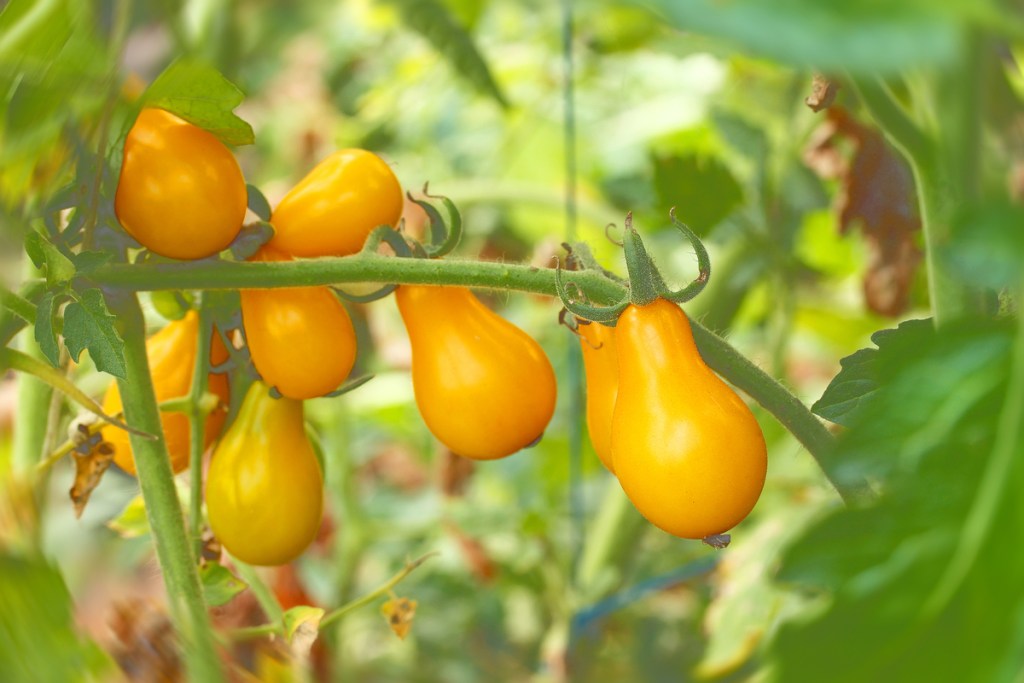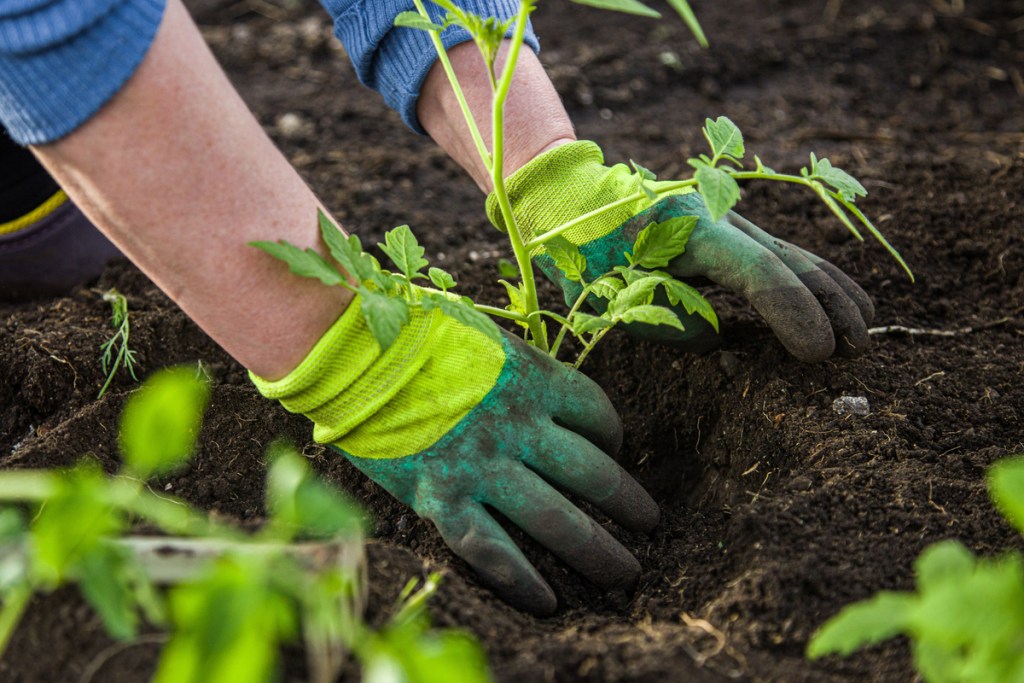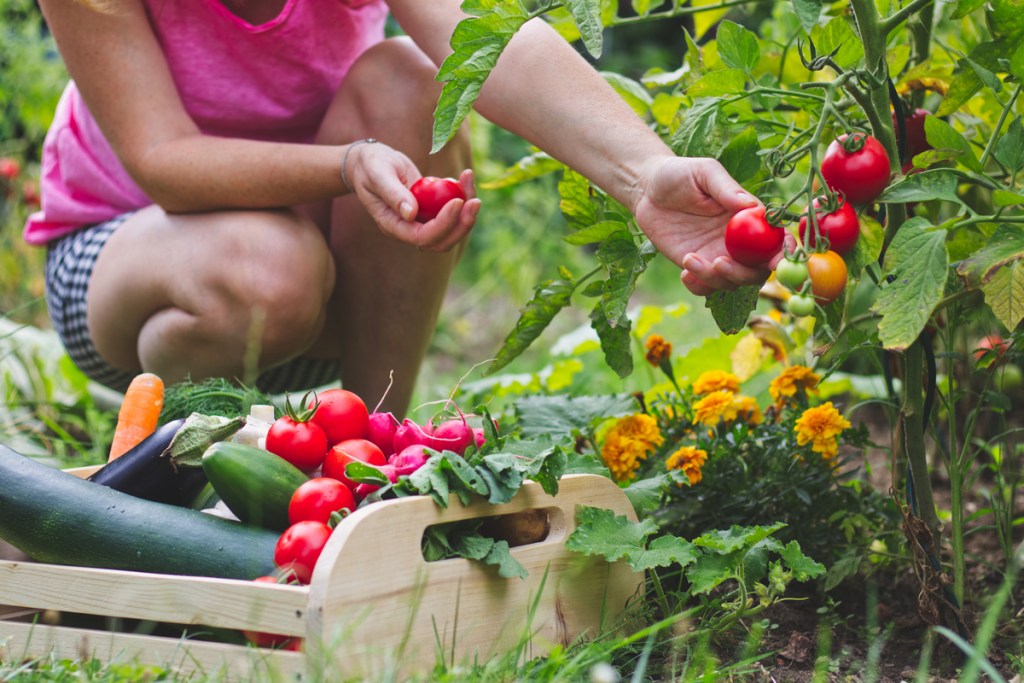Spring vegetable gardens can contain many different plants, but one of the most common is the tomato. Tomatoes are a versatile and delicious vegetable, as well as a fruit. There’s nothing quite like fresh, homegrown tomatoes, but they do have some specific care requirements. They can develop plant diseases and fungal infections, and making sure they get enough sun without developing sunburn can be tricky. We’ve prepared a simple guide to get you through the ups and downs of growing tomatoes. Here’s everything you need to know about how to plant tomatoes.
Choosing a tomato variety
There are many kinds of tomatoes, and not all tomatoes are suited for the same uses. Depending on your motive for growing tomatoes, different varieties may appeal to you. You may even want to grow multiple kinds of tomatoes at once.
Black cherry tomatoes are a beautiful and tasty type of cherry tomato. Their dark color makes them stand out, so they’re particularly popular for garnishes, salads, and other dishes that contrast with them.
Brandywine tomatoes are a large beefsteak variety, and they’re perfect for sandwiches. They have a hearty flavor that also lends itself well to salads or salsa. Brandywine tomatoes are also an heirloom variety.
Another excellent heirloom is yellow pear cherry tomatoes. These sweet and tangy yellow tomatoes are less common in vegetable gardens, but they’re heavy producers. You can add them to salads and flatbreads or eat them whole as a snack.
If you want something classic and closer to what you might find in your local grocery store, then celebrity tomatoes may be the best fit for you. These red globe tomatoes are well rounded, perfect for sandwiches, pizzas, and pastas.

Planting tomatoes
Once you’ve decided what kind of tomatoes you want to grow, it’s time to plant them. You can grow tomato plants from seeds, but many gardeners choose to plant nursery starts instead. Planting nursery starts is quicker and more reliable. If you want to grow your tomatoes from seed, consider starting them indoors during the winter.
If you’re planting nursery starts or transplanting seedlings, you’ll need to harden them off first. Hardening off allows the seedling to adjust to the elements slowly, decreasing the risk of shock. Set your seedlings outside, in a sunny, protected area. Increase the time they spend outside over the course of a week.
When planting, dig a hole that is larger than the roots of the seedling. Part or all of the stem may be underground. Additional roots will grow from the buried stem, which results in a larger root system. Choose a planting site with rich, well-draining soil. It should be in full sun, especially in cooler, northern regions. In hot, southern climates, providing light shade during the hottest part of the day can help prevent sunburn. Tomatoes are sensitive to cold weather, so it’s important not to plant them outside when there is still a chance of frost.

Caring for tomatoes
Most tomato varieties benefit from a tomato cage or garden stakes. It’s best to set these up directly after planting your seedlings. If you’re sowing seeds directly into your garden, then you can wait until the seeds sprout. Tomato cages and stakes offer support to the plants as they grow, keeping them upright. Tomato plants without this support may lean over or even brush the ground. This increases stress on the plants and leaves them more vulnerable to pests, diseases, and fungi.
While the tomato plants are young, water them thoroughly. They need roughly 2 inches of water a week in order to develop properly. After a few weeks, you can taper the watering slightly to between 1 and 1.5 inches. Don’t water them from overhead, as this increases the risk of fungal infections like anthracnose. Adding a layer of mulch around the base of your tomato plants can help the soil retain moisture and suppress weeds.

How and when to harvest tomatoes
You should harvest your homegrown tomatoes when they begin to turn the color associated with their mature state. For many tomato varieties, this is red. This typically occurs in late summer and may continue into early fall. In general, you can begin harvesting tomatoes 65 to 85 days after planting, depending on the variety you’re growing.
Tomatoes will continue to ripen after your harvest them. Harvesting them at peak ripeness is effective if you plan on using them immediately. However, if you want your tomatoes to last, harvesting them slightly before they’re ripe is ideal. Harvesting your tomatoes a little early also protects them from pest and fungal damage.
To harvest tomatoes, gently but firmly pull the tomatoes off the vine. Avoid squeezing or crushing the tomatoes, as this can damage them. Ripe tomatoes are especially at risk of damage this way.
Tomatoes are delicious, easy to grow, and come in a much wider range of sizes, colors, and flavors than you might expect. Take care not to plant them too early, when there is still frost on the ground. Make sure to plant them in full sun and water them thoroughly. When your tomatoes are ready for harvest, you’ll be grateful for the time and effort you put into raising these wonderful plants.
Editors' Recommendations
- 3 incredible reasons why you should be using coffee grounds in your garden
- Have a gross mealybug infestation on your plants? Try one of these remedies
- These plants should be among the first you plant this year
- Have you ever wondered if potatoes are fruits or vegetables? We have answers
- Gardening 101: 7 easy seeds to grow in cups for a tiny, adorable, and low-maintenance indoor garden




